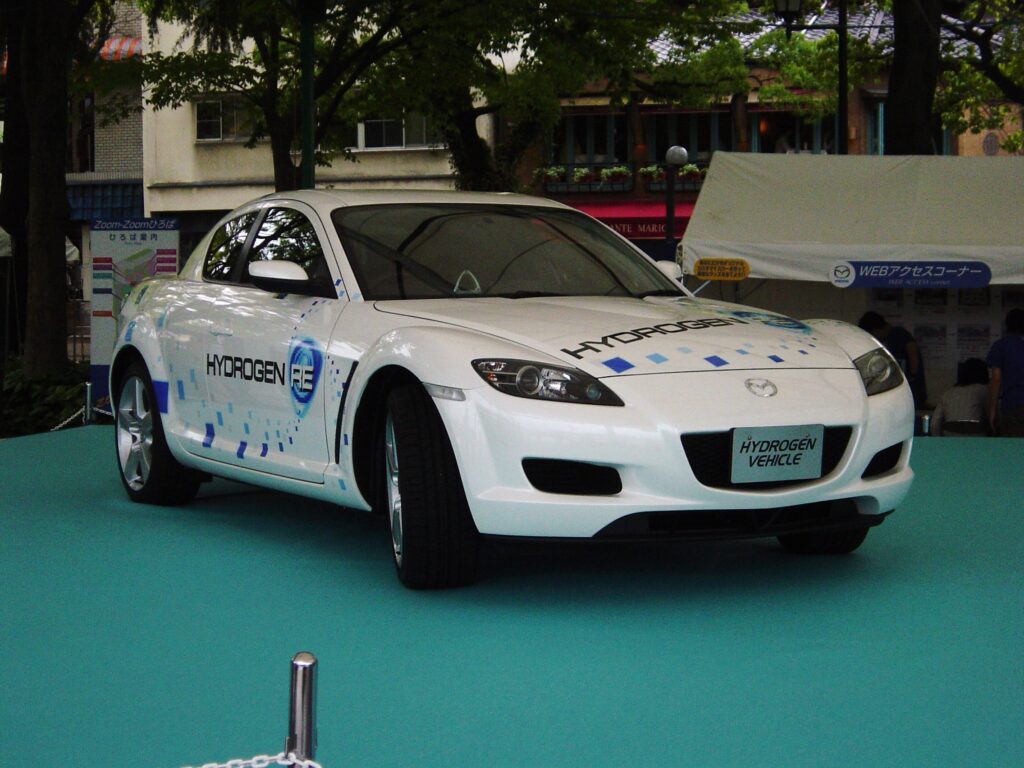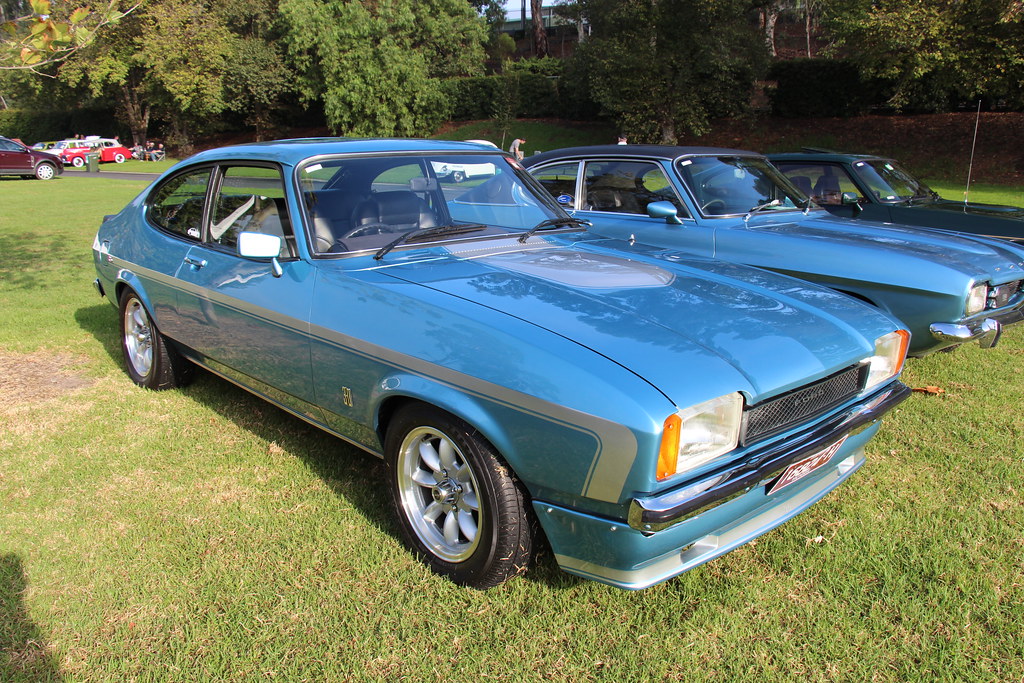
The seemingly simple act of filling up your car with gas is a regular part of vehicle ownership, often approached with little thought beyond finding the nearest station. However, for many drivers, this routine task can unexpectedly become a source of minor frustration or even anxiety, particularly when running low on fuel, navigating unfamiliar territory, or simply trying to optimize costs. Mastering the art of refueling, from the initial preparations to the final payment and vehicle checks, is not just about convenience; it’s a crucial skill that impacts your vehicle’s efficiency, longevity, and your wallet.
In an era where fuel prices are a constant consideration and vehicle maintenance is paramount, understanding the nuances of proper fueling practices is more important than ever. This comprehensive guide, informed by expert analysis and practical insights, aims to transform your gas station visits from a mundane chore into an informed, strategic process. We’ll delve into key steps and valuable tips, ensuring you’re well-equipped to make the most of every fill-up, save money, and safeguard your car’s vital systems against potential damage.
Here’s how to become a true gas-filling pro, ensuring optimal performance and protection for your vehicle with every visit to the pump. We’ll explore critical aspects from getting started to securing your fuel tank, providing the detailed, actionable advice you need to confidently handle your next fueling experience.

1. **Prioritize Pre-Trip Vehicle Checks**Before you even consider pulling up to a gas station, a few fundamental checks can significantly smooth your fueling process and prevent unexpected headaches. These preparatory steps are not merely suggestions; they are foundational practices that contribute to overall vehicle health and your peace of comfort on the road. By making these quick assessments a routine, you establish a proactive approach to fuel management.
A primary concern should always be your car’s fuel gauge. Regularly checking this instrument is the most direct way to avoid the inconvenience and potential hazards of running critically low on fuel. For those embarking on longer journeys or venturing into less familiar locales, ensuring you have a full tank of gas before departure is a non-negotiable step. This simple habit eliminates the stress of searching for a gas station under pressure and provides a buffer against unforeseen circumstances.
Equally important is the condition of your gas cap. A tightly closed gas cap serves multiple critical functions; it prevents precious fuel from evaporating into the atmosphere and ensures that your car’s fuel readings remain accurate. An improperly sealed cap can lead to fuel loss and even trigger your “check engine” light, indicating a preventable issue. Furthermore, maintaining a clean and clear fuel filter is vital for optimal fuel flow, preventing debris from impeding your engine’s performance.

2. **Strategic Gas Station Selection**With a myriad of gas stations vying for your attention, choosing the right one can feel like an overwhelming decision. However, making an informed choice about where you fill up can lead to tangible benefits, from better fuel quality to significant cost savings. It’s about more than just proximity; it’s about aligning your fueling habits with smart consumer choices.
One crucial factor is the quality of the fuel itself. Seek out gas stations that explicitly offer high-quality fuel, such as those with high-octane or premium fuel options, if your vehicle’s manufacturer recommends it. While most standard fuels meet basic requirements, opting for reputable brands often means better additive packages that help keep your engine cleaner. Checking reviews and ratings for gas stations can provide invaluable insights into their service and the perceived quality of their fuel, helping you avoid establishments with questionable practices.
Beyond fuel quality, smart drivers consider the economic advantages. Many gas stations now feature loyalty programs or offer rewards cards that can translate into considerable savings on fuel and other purchases over time. Enrolling in these programs can incrementally reduce your overall fuel expenditure, making each fill-up a little lighter on your wallet. Look for these incentives and integrate them into your fueling routine.
Lastly, the presence of amenities can enhance your gas-filling experience, especially during long drives. Stations equipped with clean restrooms, ATMs, and convenient food and beverage options offer a more comfortable and practical stop. While not directly related to fuel quality, these conveniences contribute to a more positive overall experience, making your chosen station a more appealing option for routine stops.
Read more about: Expert Picks: The 10 Best Road Trip Cars for 2024 & 2025, Thoroughly Reviewed for Your Next Adventure

3. **Safe Positioning at the Pump**Approaching the pump might seem like a straightforward maneuver, but proper positioning and safety protocols are paramount to a smooth and hazard-free fueling experience. This initial stage sets the tone for the entire process, preventing awkward stretches, potential spills, and, most importantly, ensuring your safety and the safety of those around you. Awareness starts before you even shift into park.
First, locate your car’s fuel tank. While it’s typically above the rear wheel, either on the driver’s or passenger’s side, some older or specialized vehicles might differ. An invaluable tip for drivers already in their vehicle is to look for the small arrow next to the fuel gauge on your dashboard; it invariably points to the correct side of the car. This quick check saves you from having to exit your vehicle unnecessarily to confirm.
Once you’ve identified the correct side, select a pump that dispenses the specific type of fuel your car requires—gasoline, diesel, or alternative fuels. Pay close attention, as some pumps are dedicated solely to diesel, while others offer regular gasoline, and some combine both with separate nozzles. Carefully pull your vehicle as close as possible to the chosen pump, ensuring the gas tank is accessible while leaving a comfortable working space—ideally two to three feet—between your car and the pump itself.
After positioning, immediately put your car in park (or neutral for a manual transmission) and turn off the ignition. This step is critical for safety, as pumping fuel into a running vehicle is inherently unsafe and strongly advised against. Furthermore, for everyone’s safety, leave all cigarettes, lighters, vapes, and cell phones inside the car. Open flames can easily ignite fuel fumes, and static electricity generated by electronic devices has been linked to gas station fires, making it a risk not worth taking.
Read more about: Steer Clear: 12 SUVs That Will Drain Your Wallet with Costly Maintenance and Reliability Nightmares

4. **Mastering Payment Methods**Before a single drop of fuel enters your tank, the transaction must be handled. Modern gas stations universally require prepayment, a measure implemented to prevent drive-offs and protect the station from financial loss. Understanding your payment options, whether inside with a cashier or directly at the pump, can streamline your experience and potentially unlock savings.
For those who prefer cash or need to manage a specific budget, paying inside is the traditional route. You’ll need to remember your pump number, which is usually prominently displayed on the corner of the pump unit. Inform the attendant how much gas you intend to purchase, for example, “$20 of regular at pump 3.” If you overpay for a full tank, perhaps because you requested a specific dollar amount but your tank filled sooner, you can always return to the cashier to receive your change. This method offers a clear way to control your spending.
Paying at the pump, typically with a credit or debit card, offers unparalleled convenience and is favored by many drivers. The process usually involves following on-screen prompts to insert or tap your card, often requiring a PIN or zip code for verification. Your card is not charged until the fueling process is complete and the total amount is determined. This allows for filling to a specific dollar amount or simply filling the tank until the automatic shut-off engages.
A significant advantage of paying at the pump, or even inside, is the integration of loyalty programs. If you are among the substantial percentage of Americans who hold a gas station loyalty membership, remember to swipe your member card or enter your member number when prompted. These programs can offer valuable discounts or rewards, transforming a routine expenditure into an opportunity for savings. Always be on the lookout for these options to maximize your value.
Read more about: Your Essential Roadmap to Financial Control: 14 Practical Budgeting Strategies for Savvy Spenders

5. **Proper Fuel Lid and Cap Management**Accessing your fuel tank requires a couple of simple yet crucial steps: opening the fuel lid and removing the gas cap. While these actions appear minor, performing them correctly and safely is essential for both preventing fuel evaporation and avoiding potential vehicle issues. It’s a small detail that can have surprisingly impactful consequences if overlooked.
The method for opening your fuel lid varies by vehicle. In some cars, you might simply be able to open it manually from the outside. However, many newer vehicles incorporate a lever or button located inside the car, often near the driver’s seat or dashboard, similar to those for the trunk or hood release. It is a good practice to release your fuel door *before* exiting the vehicle if it requires an internal mechanism. This saves you the inconvenience of getting back into your car after realizing the lid is still closed. If you are ever unsure, your owner’s manual is the definitive guide for your specific model.
Once the fuel lid is open, the gas cap becomes accessible. Unscrew it by turning it counter-clockwise (“lefty-loosey”). Most modern gas caps are frequently designed with a tether or wire, allowing them to hang freely from the tank while you pump. This ingenious feature prevents the cap from being lost or forgotten. If your cap isn’t tethered, find a secure, clean spot to place it, perhaps on the fuel lid itself if it has a built-in holder, or carefully on the car’s roof, ensuring it won’t roll away or get contaminated.
It’s important to remember that with the fuel cap removed, fuel vapors can escape into the atmosphere, contributing to emissions. To minimize this, only remove the cap when you are ready to insert the nozzle and begin pumping fuel. Properly managing your fuel cap ensures environmental responsibility and prevents the dreaded yellow “check engine” light from illuminating on your dashboard, a common warning triggered by an unsealed or missing gas cap.
Read more about: Unmasking the Trust Deficit: Why Car Dealerships Are Struggling to Connect with Today’s Buyers and How They Can Rebuild Confidence

6. **Accurate Nozzle Insertion and Fuel Grade Selection**With payment secured and the fuel tank ready, the next critical step involves handling the pump nozzle and making the correct fuel grade selection. This stage is where you directly interact with the fuel delivery system, and precision is key to both vehicle safety and optimal performance. Making the right choices here directly influences how efficiently your engine runs and prevents costly mistakes.
Begin by carefully grabbing the appropriate nozzle from the pump. Gas stations often provide separate nozzles for different fuel types, with diesel nozzles frequently having a distinct green handle and a different size to prevent accidental misfueling. Double-check that you have selected the correct type of fuel for your vehicle – gasoline, diesel, or ethanol – as using the wrong fuel can cause severe, immediate damage to your engine requiring extensive repairs.
Once the correct nozzle is in hand, insert it fully and securely into your car’s fuel tank filler. The nozzle should fit snugly and be stable enough that you shouldn’t need to hold it in place for the entire pumping duration. This secure insertion is crucial for the proper functioning of the automatic shut-off mechanism that prevents overfilling. Avoid tapping the nozzle against the filler neck, as this could potentially damage either the nozzle or your car’s filler neck sealing surface.
Next, select the appropriate fuel grade. Most U.S. gas stations offer Regular (typically 87 octane), Mid-grade (89-90 octane), and Premium (91-94 octane). These numbers represent the gasoline’s octane rating, indicating its resistance to knocking or pre-ignition. Consult your vehicle’s owner’s manual to determine the manufacturer’s recommended fuel grade. Using a higher-octane fuel than your car requires offers no benefit and simply wastes money, while using a lower-octane fuel than specified can lead to engine damage. For safety, most pumps require the nozzle to be lifted before allowing you to select the fuel grade, so always follow the on-screen prompts diligently.

7. **Initiating and Monitoring the Fueling Process**Now that the nozzle is correctly inserted and the fuel grade selected, it’s time to begin pumping. This phase requires attention and adherence to safety guidelines to ensure a smooth, secure, and spill-free operation. While modern pumps are designed with automatic safety features, your active presence and awareness remain indispensable throughout the entire process.
To start the flow of gasoline, simply pull the trigger on the nozzle. Most modern pumps are equipped with a small metal tab or hook that allows you to lock the trigger in the “on” position. This convenient feature means you don’t have to continuously hold the handle, freeing your hand. However, despite this automation, it is critically important to remain at the pump and actively monitor the fueling process. Do not, under any circumstances, re-enter your vehicle or walk away while the pump is in operation.
Remaining outside and near your car allows you to track the amount of gasoline entering the tank and monitor the total cost on the pump’s display. More importantly, it is a crucial safety measure. Getting back into your car, even briefly, can generate enough static electricity, which, upon exiting and touching the nozzle again, could ignite gasoline vapors. This rare but serious risk underscores the importance of staying clear of the vehicle’s interior until fueling is complete.
The pump is designed to automatically shut off when your tank is full or when it reaches the prepaid amount, whichever comes first. You will typically hear a distinct click, and the trigger will return to the “off” position, signaling that the fueling is complete. This automatic shut-off prevents overfilling and spills, though vigilance is still advised. Should the pump repeatedly shut off early, it might indicate a problem with the vapor recovery system, such as a clogged carbon canister, which might warrant professional inspection.
Read more about: A Perilous Miscalculation: When Pirates Attacked the Unyielding Power of Warships and Faced Swift Defeat

8. **Concluding the Fueling Process: Nozzle Removal and Replacement**When the automatic shut-off system engages, signaling your tank is full or the prepaid amount is met, it’s time to carefully remove the nozzle. This crucial step prevents spills, ensures safety, and protects equipment. A distinct click confirms the pump’s cessation, with the trigger returning to its “off” position.
Gently extract the nozzle, pointing it away from you and holding it vertically to minimize drips. This prevents splashes on yourself, your vehicle, or the ground, reducing slip hazards and potential ignition risks. Securely return the nozzle to its holder.
Should any gasoline drip, clean it immediately with provided paper towels. This maintains a clean environment and protects your car’s paint. Avoid tapping the nozzle against the filler neck, as this can cause damage despite non-ferrous construction.

9. **Securing Your Fuel Tank: Cap and Lid Management**After replacing the fuel nozzle, immediately secure your vehicle’s fuel tank by recapping it and closing the fuel lid. This vital action maintains fuel efficiency, prevents harmful emissions, and averts diagnostic trouble codes, such as the “check engine” light, which an unsealed system can trigger.
Screw the fuel tank cap back into place, tightening it clockwise until you hear multiple clicks—typically three or more—or until it stops abruptly. This ratcheting mechanism ensures a secure seal, crucial for preventing fuel vapors from escaping and blocking external contaminants.
Failure to properly secure the gas cap can illuminate your dashboard’s “check engine” or “Check Gas Cap” light, indicating an evaporative emissions leak. Beyond this nuisance, an unsealed cap directly contributes to fuel evaporation, impacting your fuel economy and environmental responsibility.

10. **Finalizing the Transaction: Receipt and Odometer Reset**With your fuel tank securely sealed, the final steps at the pump involve completing your transaction and performing a vital vehicle check for ongoing monitoring. If you paid at the pump, the screen will prompt you to accept or decline a printed receipt. For meticulous expense tracking, a receipt provides clear documentation for budgeting, taxes, or reimbursements.
However, if a physical record is not needed, declining it reduces paper waste. It’s also worth noting that thermal paper often contains Bisphenol A (BPA), a chemical linked to health concerns; minimizing handling can be a prudent, albeit minor, health consideration.
After completing the transaction, before driving, reset your vehicle’s trip odometer. This is fundamental for accurately tracking your fuel consumption (MPG). Resetting it after each full fill-up creates a consistent baseline. To calculate true fuel efficiency, divide miles driven since the last reset by gallons consumed at the current fill-up. This manual method often provides a more precise MPG figure than onboard computers, empowering you with factual data.

11. **Optimizing Fuel Quantity: The “Fill Up in the Morning” Rule**Savvy drivers can maximize fuel received per dollar by strategically timing their fill-ups during cooler hours, ideally early morning or late evening. This advice, rooted in basic physics and echoed by consumer advocates, offers a subtle yet consistent advantage, particularly when fuel prices are high.
Gasoline expands when warm and becomes denser when cold. Fuel stored underground warms with ambient temperatures throughout the day, causing it to expand. This means a gallon of warmer, expanded fuel contains slightly less energy and fewer actual gasoline molecules than a gallon of cooler, denser fuel.
Therefore, pumping gas in the early morning or late evening, when underground tanks are coolest, ensures you get a denser product. While the difference per gallon is minor, these incremental gains accumulate over countless fill-ups, offering better value and contributing to overall fuel system protection.

12. **Maximizing Your Investment: Pumping Fuel Slowly**To optimize your fuel purchase, resist the urge to pump gas at the fastest setting. Selecting a lower flow speed, while seemingly counterintuitive, helps ensure you receive the full quantity of fuel you are paying for, benefiting your wallet and your vehicle’s efficiency. This recommendation is based on how gasoline behaves during rapid dispensing.
Rapid gasoline pumping causes increased agitation and vaporization. Modern gas pumps feature a “vapor return line” system to capture these escaping fuel vapors, returning them to the underground tank. However, this means that vaporized fuel, for which you are charged, is siphoned back into the station’s tank.
By using a slower setting and not engaging the nozzle clip on its fastest notch, you minimize vaporization. A gentler flow ensures a higher proportion of liquid gasoline enters your tank. This practical adjustment translates directly into receiving more usable fuel for your purchase, leading to measurable savings over time.

13. **Safeguarding Your Engine: Avoid Fueling During Deliveries**A critical tip for protecting your vehicle’s engine and fuel system is to avoid fueling when a tanker truck is actively replenishing the gas station’s underground tanks. This scenario poses a heightened risk of introducing contaminants, potentially leading to costly repairs and diminished performance.
When fuel is discharged into underground tanks, it inevitably stirs up sediment, dirt, and debris. Although gas stations employ filters, these may not be foolproof against a high volume of agitated contaminants, especially during or immediately after a delivery.
Pumping gas at this time increases the chance that disturbed particles could bypass filters and enter your car’s fuel tank. Such foreign matter can clog your fuel filter and damage sensitive components like injectors and the fuel pump, leading to poor engine performance and expensive maintenance. For long-term vehicle health, choose another station or return later.

14. **Protecting Fuel System Health: Avoid Running on Empty and Overfilling**Maintaining optimal fuel system health requires a balanced approach: neither letting your tank run too low nor overfilling it. Both habits can have detrimental effects on your vehicle’s components and overall efficiency. Adhering to a sensible fuel level range is a practical measure for extending critical parts’ life and maximizing fuel investment.
Consistently driving with a near-empty tank poses several risks. The fuel pump relies on gasoline for lubrication and cooling; low levels can cause overheating and premature wear. An empty tank also increases air space, leading to fuel evaporation, condensation, and corrosive moisture. Accumulated sediment is more likely to be drawn into fuel lines, causing blockages and damage. Experts advise refilling at no less than a quarter tank.
Conversely, overfilling or “topping off” after automatic shut-off can severely damage your vehicle’s onboard vapor recovery (EVAP) system, which captures fuel vapors. Flooding the EVAP charcoal canister with liquid fuel renders it ineffective, potentially requiring costly replacement. Beyond system damage, overfilling causes spills, increases vehicle weight, impacts fuel economy, and may expose consumers to fraud. Adhering to the automatic shut-off is therefore crucial.

15. **Enhancing Efficiency and Longevity: Fuel Additives and Tire Pressure**Beyond fueling, two practices significantly contribute to your vehicle’s long-term fuel efficiency and system health: judicious use of fuel additives and diligent tire pressure maintenance. These proactive, often overlooked measures measurably impact performance, longevity, and operational costs, solidifying informed vehicle ownership.
Integrating a quality fuel additive or cleaner helps maintain a pristine fuel system. Over time, deposits in injectors, on intake valves, and within combustion chambers impede performance and reduce efficiency. Additives clean these components, ensuring efficient fuel delivery and combustion, preventing buildup, restoring power, and promoting smooth engine operation, leading to consistent fuel economy and fewer repair needs.
Secondly, ensuring proper tire inflation is a simple, highly effective way to improve fuel efficiency and prolong tire life. Underinflated tires increase rolling resistance, forcing the engine to work harder and consume more fuel, and cause uneven tread wear. Conversely, correctly inflated tires reduce drag, optimize road contact, and distribute weight evenly, enhancing fuel economy and safety. Regularly checking pressure (at least monthly and before long trips) and adjusting to the manufacturer’s recommended PSI is a powerful habit yielding tangible benefits.
Mastering the art of refueling extends far beyond the basic act of filling the tank. By incorporating these advanced techniques and expert tips into your routine, from understanding the subtle science of fuel density to diligently protecting your vehicle’s intricate systems, you transform a mundane task into a strategic act of vehicle care. These practices not only safeguard your investment and enhance your car’s longevity but also empower you to make smarter, more economical choices with every visit to the pump. Embrace these insights, and drive with confidence, knowing you are maximizing every drop of fuel and maintaining your vehicle’s health like a true professional.



